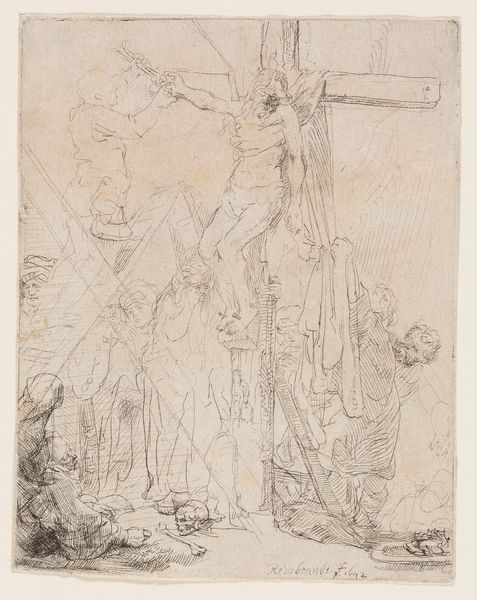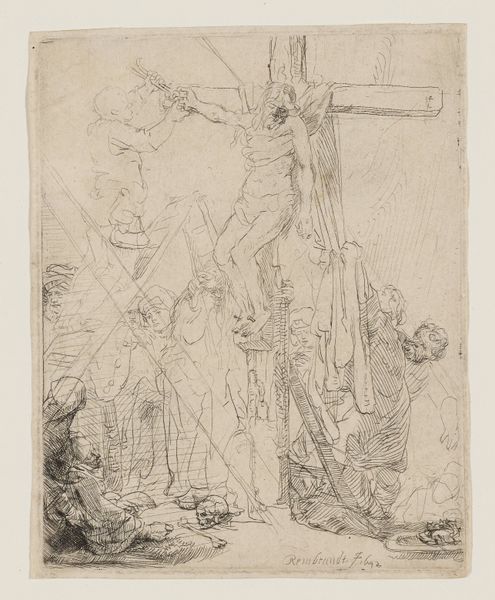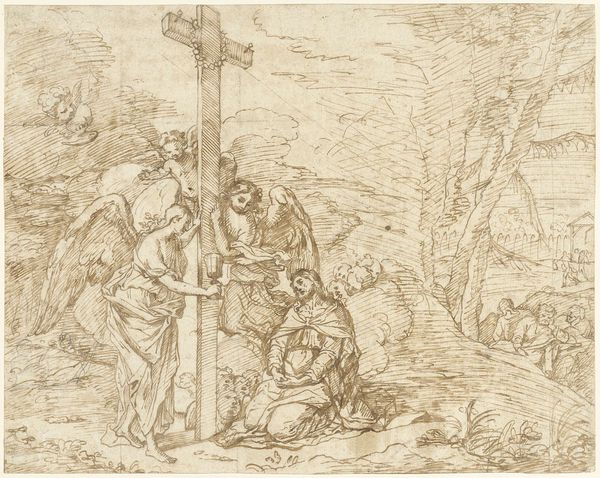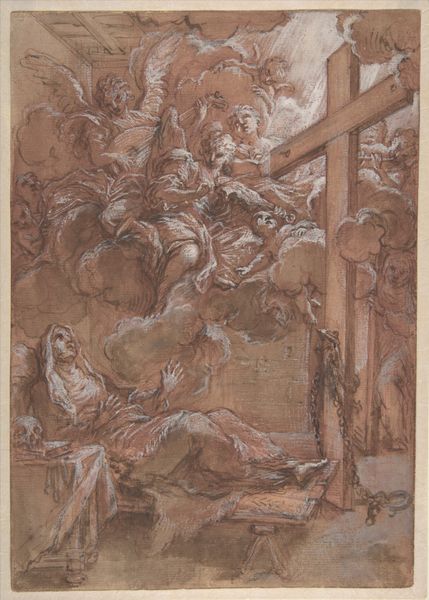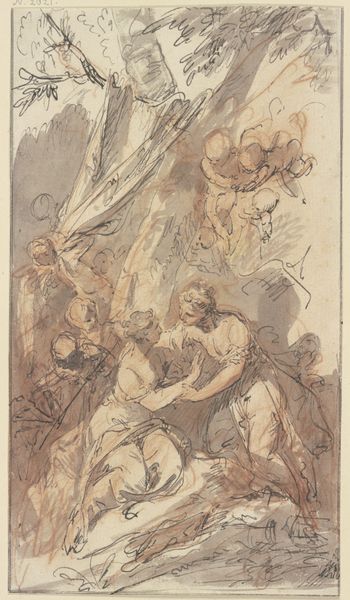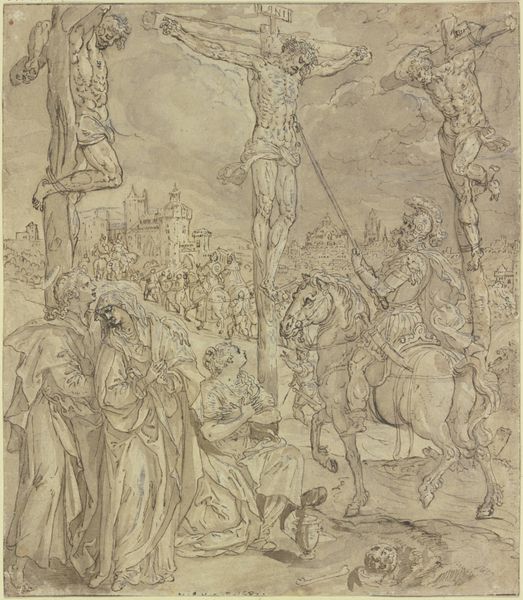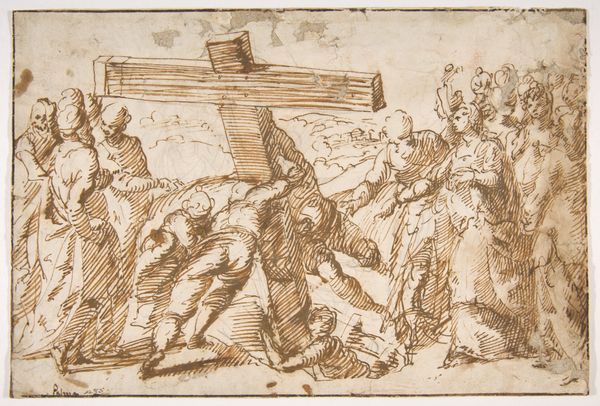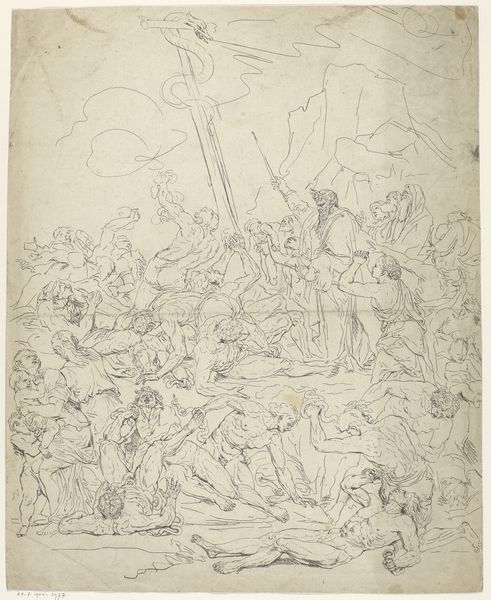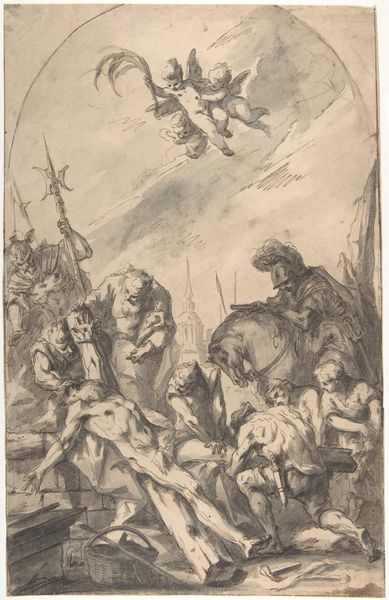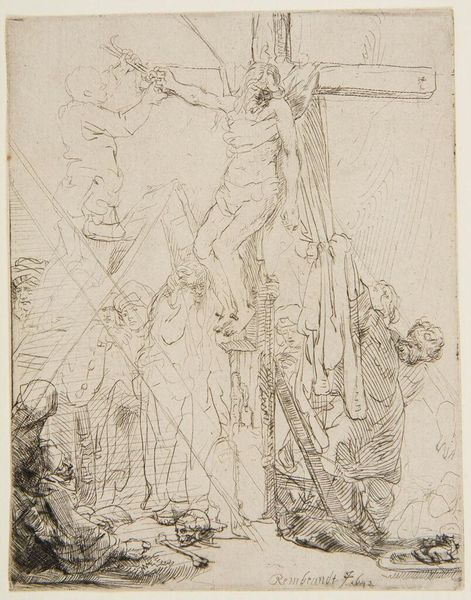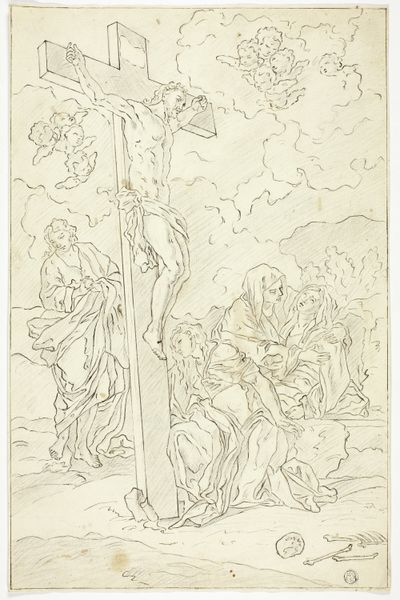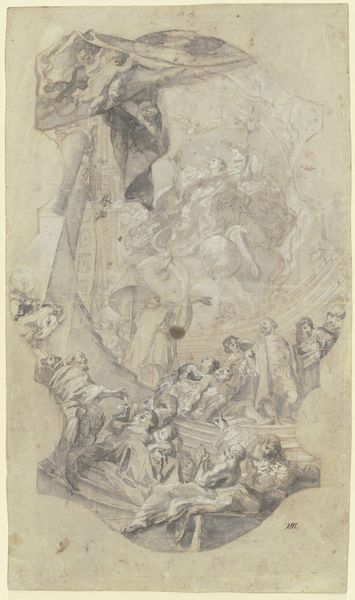
drawing, ink, pen
#
drawing
#
narrative-art
#
ink painting
#
etching
#
figuration
#
ink
#
line
#
pen
#
history-painting
#
italian-renaissance
Dimensions: 212 mm (height) x 142 mm (width) (bladmaal)
Curator: Giovanni Battista della Rovere, also known as Il Fiammenghino, likely rendered this piece, "Christ Carrying the Cross", between 1560 and 1627. The artwork now resides at the SMK, the National Gallery of Denmark. Editor: Immediately, the composition strikes me. The starkness of the line work against the paper, that tight cluster of figures surrounding Christ—it evokes such immediate tension, even torment. Curator: Consider that the pen and ink medium allows for such immediacy. It wasn't about the slow accumulation of paint, but a direct and rather efficient method to disseminate imagery among a broader populace. Editor: Absolutely, and I'm drawn to that efficiency. The minimal hatching defines the form and texture, especially evident in Christ's drapery. The visual weight seems perfectly balanced to amplify that feeling of struggle. Curator: This speaks directly to the economics and labor conditions in printmaking. These prints weren't precious commodities, but more utilitarian—consumed widely by people to perhaps display at their homes and other environments to invite reverence and devotion. Editor: But, regardless of its origin or intent, note how della Rovere employs linear perspective to draw our eye through the mass of bodies. Observe how Christ is centered. His face—drawn with more refined lines—catches the available light in such an ethereal manner. Curator: The historical context is critical. We're at a point in printmaking where workshops and specialized labor play a significant role. This artwork encapsulates the shift from individual artistry to more collaborative modes of artistic production in service to market demand. Editor: Agreed, however, that collaboration doesn’t diminish the power of its design. The intentional starkness, achieved through simplified forms, creates a lasting impact. Curator: I would venture the medium is more than just design, that is an aesthetic choice shaped by availability of means to fulfill market functions of sacred subject matters. Editor: A compelling assessment as we conclude this segment. It allows us to truly value the synthesis between artistry and labor embedded in "Christ Carrying the Cross." Curator: Indeed, thinking about artwork like these provides insight into its history, craftsmanship and reception of prints like these, further demonstrating how devotional and secular images shape cultural and social mores.
Comments
No comments
Be the first to comment and join the conversation on the ultimate creative platform.
